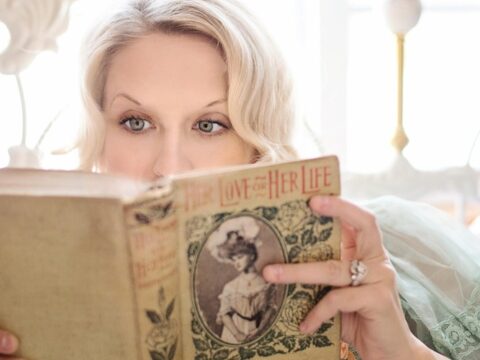Well it’s official: my husband and I have moved into a new house in a new city. And though I haven’t blogged in a while, I have been anything but idle in the past 2.5 months. Moving comes with lots of emotional processing and many goodbyes. It also comes with lots of packing and unpacking, losing things you didn’t realize were vital in your daily life, babyproofing a new environment, and restocking a new pantry. Also the intimidating yet delightful task of decorating a new house so it feels less empty. I can attest that even old furniture feels brand new in a different setting.
Moving also has a way of bringing a flood of exciting new energy into one’s life. Even I, a certified introvert, am suddenly jumping out of my skin to explore my new city, organize every drawer and closet, take my little one on adventures, cook new foods, and try new things. My latest adventure has been making new friends.
Adult Friendships Are Difficult
I feel like I’ve read so many articles about how friendships in adulthood are much harder than when we were kids. There’s a lot of truth to that, especially finding time to see your adult friends when you have perfectly conflicting schedules and families who always need you. But it’s also nice starting with a clean slate with people you’ve only just met.

Humans in packs can make me feel very nervous or very annoyed depending on the situation, but it’s a special kind of delight to get to know a brand new set of humans. I love finding out who I click with and who is looking for new friends. Then I carve out some time to get to know individuals better one-on-one, my absolutely favorite setting to social in. And of course it’s a high honor to receive invites to fun events like craft nights, spring cupcake parties, and neighborhood book clubs. All of which I’m totally down to enjoy.
Something else I’m discovering lately is that making new friends is awfully similar to developing fictional characters. And characters happen to be my favorite part of writing.
Writers Are a Little Wacky When it Comes to Our Characters
If you’ve ever noticed that writers talk about their fictional characters like they’re real people . . . I admit that I too suffer from this rare disease. It’s one of the best afflictions to have, thinking that the people you write about are actually real in an alternate reality kind of way. This is very common for writers, by the way, because truly great fictional characters need to feel realistic. They respond to fictional situations like a real person would. And above all else, they must be relatable.
I’ve written before about my personal writing process, and for me at least, a new story always starts with a great character. As I’m meeting lots of people IRL, I can’t help noticing that getting to know fictional characters is awfully similar to what I’m going through right now . . .
5 Ways Meeting Fictional Characters Is Like Making New Friends
#1: You Learn About Them by Asking LOTS of Questions
Whether you’re getting acquainted with a new friend or dating a tall dark stranger, you’re asking lots of questions. What do they like? Where do they go? What kind of activities do they enjoy or cool spots do they recommend? When you’re developing fictional characters, every single one of these questions are things you as the writer probably need to know.
The mundane everyday details of a character tell you so much about who they are and what they value. Simple facts like their favorite guilty pleasure, their current goals, or their biggest fears can lead to fantastic scenes where other characters (and your reader) can get to know your fictional characters fast. This is what memorable and entertaining writing is all about.

#2: You Want to See Fictional Characters (and New Acquaintances) in New Situations
It’s one thing to meet someone and click with them once. It’s even better to see them again and again in different settings so you can truly get to know them. Just the other week, I got to introduce a new friend to fresh sushi for the first time. It was a blast, and it definitely helped me get to know her quickly.
Variety is also a powerful tool in character development. Some of the best and most interesting scenes I’ve ever written were about fictional characters trying something new—especially something they would never try on their own. How about a situation that your character finds embarrassing or scary? Or very confusing? These are all situations with a high likelihood of being fun to read and moving the plot forward in interesting ways. That is always our goal.

#3: Learn Their Backstory
“So: tell me your story” is something I love to ask people. It’s fascinating to see how deep they choose to go with that question. Some people just giggle and tell you the usual stuff about where they grew up and went to college. Others dive into the deep end and talk about their deepest regrets and dreams, which makes for fantastic conversation. Writers are notoriously nosey people in case you didn’t know.
Obviously it’s also our job to know every little detail about our fictional characters’ dark, tragic backstories. It’s how our characters got to be so—well—dark and tragic. Backstory can explain everything about their motivations and perhaps why they have a full-on panic attack every time they hear wind chimes. This backstory needs to have all the details of your character’s family, education, childhood trauma, best and worst memories, and generally how hard of a life they’ve had. Because all that information explains why they trust no one or why they’ve never worked a day in their lives.

#4: Notice the Little Details
Writers are born people watchers, so we tend to be very detail-oriented and notice the teeny tiny things. We are masters of picking apart semantic details and reading in between the lines in run-of-the-mill conversations. I personally pick up A LOT by noticing the things people don’t say in conversation. Admittedly, I pretend not to notice these things since I don’t want people to feel paranoid about me.
But I also think about the tiniest sensory details of my fictional characters. Anything that makes them stand out. What odd little ticks do they have as they move? What smells make them nostalgic? What fashion choices do they judge harshly or little chores do they not bother doing? Are there particular traits they’re attracted to? Particular triggers that always make them laugh? Pet peeves or superstitions they constantly avoid? You get the idea: the devil is the details. And so is fabulous development of fictional characters.
#5: Enjoy the Surprises
Frankly, I love it when someone gives me a specific first impression and then says or does something I wasn’t expecting. One of best parts of human beings is that they’re unpredictable. And one of the truest delights of getting to know people is seeing all the layers of who they are, even the ones they actively hide or don’t bring out until you know them really well.
Writers have to be cautious when pulling something out of left field in fiction. We never want characters to act out of character. But it can also be fun to withhold important details about them until the exact right situation—or the exact wrong one. Even my best characters who I spent years developing sometimes surprise me and do something much meaner or much braver than I expected. But hey, as long as the surprises make sense and don’t feel like handwavium, I’m for it!

For the Record, I’m Not a Head Case: I Know My Characters Are Only Fictional
But I will say that writers know their creations about as well as you know most people in your life. We have to think through every little thing. How else would we know exactly how to write them in any situation that our story demands? Sometimes we even gain pleasure in putting our characters through the worst scenarios we can possibly imagine . . . but that’s a subject for another day. ❧




